From the end of March until May, Keukenhof gardens, Holland's most famous spring gardens, will burst into a kaleidoscope of colour as spring comes to life in a stunning display of breathtaking beauty. Millions of tulips and other bulb flowers will burst in bloom, a fantastic experience for everyone and a wonderful spectacle to photograph. Keukenhof is situated on the west coast of Holland, in the Holland Rijnland area, with its flower fields, the beaches of Noordwijk and Katwijk, beautiful villages and the historical city of Leiden. Click here for more information on Keukenhof Gardens.
Category Archives: archive
Write for the Globetrotters monthly e-newsletter
If you enjoy writing, enjoy travelling, why not write for the free monthly Globetrotters e-newsletter! The Beetle would love to hear from you: your travel stories, anecdotes, jokes, questions, hints and tips, or your hometown or somewhere of special interest to you. Over 8,000 people currently subscribe to the Globetrotter e-news.
To see your story in cyber print, e-mail the Beetle with your travel experiences, hints and tips or questions up to 750 words, together with a couple of sentences about yourself and a contact e-mail address to Beetle@globetrotters.co.uk
Lighters Banned in Hand Luggage in US
Congress passed a bill last year adding lighters to the list of items prohibited in the cabin. The ban started mid April 2005. Lighters haven't been permitted in checked bags for at least 30 years because they might start fires in cargo holds. The reason for the ban was the failed shoe bomber, Richard Reid, who tried unsuccessfully to light explosives hidden in his shoes on a trans-Atlantic flight in 2001. He used matches.
The Spice Islands by Jon Hornbuckle
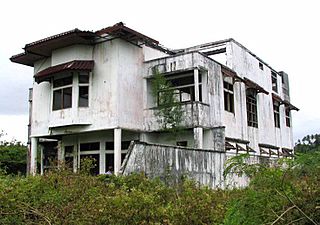 The killing is over on Ambon, the hub of the Moluccas, or Spice
Islands, in Indonesia. There is an invisible line drawn between the
Christian and Muslim sectors in the City – it is still dangerous to
stop on the wrong side. The burnt out churches, houses and even
university buildings are reminders of the carnage that occurred a
short while ago, when Ambon was likened to Beirut at its worst.
“So it was a religious war?” I enquire. “Not really,
more the result of political manoeuvrings. Now we have peace and
democracy, but no jobs, clean streets or reliable infrastructure,
the opposite of neighbouring Singapore.” Almost incredibly,
fair and trouble-free elections had just been completed, much to
the surprise of the incumbent president, who refused to accept
defeat. “I would rather be in the hands of the Chinese army
than the Indonesian”, a French photo-journalist told us later,
after describing how he had to injure himself to persuade the
Chinese soldiers to release him. “You won't be killed or
“disappear” in their custody.”
The killing is over on Ambon, the hub of the Moluccas, or Spice
Islands, in Indonesia. There is an invisible line drawn between the
Christian and Muslim sectors in the City – it is still dangerous to
stop on the wrong side. The burnt out churches, houses and even
university buildings are reminders of the carnage that occurred a
short while ago, when Ambon was likened to Beirut at its worst.
“So it was a religious war?” I enquire. “Not really,
more the result of political manoeuvrings. Now we have peace and
democracy, but no jobs, clean streets or reliable infrastructure,
the opposite of neighbouring Singapore.” Almost incredibly,
fair and trouble-free elections had just been completed, much to
the surprise of the incumbent president, who refused to accept
defeat. “I would rather be in the hands of the Chinese army
than the Indonesian”, a French photo-journalist told us later,
after describing how he had to injure himself to persuade the
Chinese soldiers to release him. “You won't be killed or
“disappear” in their custody.”
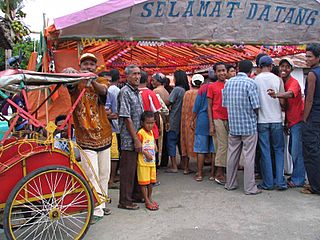 With two friends I drove across the spine of Ambon to Hila, an old
village overlooking the much larger island of Ceram, passing
countless cloves and nutmegs drying in the sun on the roadside. It
was hard to believe that centuries ago such spices were valued more
highly than gold, with the result that the islands were a
battle-ground for the colonial powers, ending when we swapped our
land there for New York, after smuggling out seedlings to establish
plantations in India! We hiked up a steep trail, through spice
plantations, to a ridge with a spectacular view over the partially
forested hillsides. Here we strove to observe two species of
parrots endemic to these islands, which we could hear but not see.
We returned early the following morning and were rewarded by the
sight of the electric Moluccan Red Lory and the “poorly
known”, to quote the bird book, but well-named Drab
Honeyeater. On the drive back to the airport, we stopped to chat
and photo the friendly locals, many of whom were Muslims.
With two friends I drove across the spine of Ambon to Hila, an old
village overlooking the much larger island of Ceram, passing
countless cloves and nutmegs drying in the sun on the roadside. It
was hard to believe that centuries ago such spices were valued more
highly than gold, with the result that the islands were a
battle-ground for the colonial powers, ending when we swapped our
land there for New York, after smuggling out seedlings to establish
plantations in India! We hiked up a steep trail, through spice
plantations, to a ridge with a spectacular view over the partially
forested hillsides. Here we strove to observe two species of
parrots endemic to these islands, which we could hear but not see.
We returned early the following morning and were rewarded by the
sight of the electric Moluccan Red Lory and the “poorly
known”, to quote the bird book, but well-named Drab
Honeyeater. On the drive back to the airport, we stopped to chat
and photo the friendly locals, many of whom were Muslims.
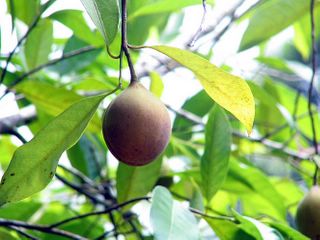 The main reason for going to Ambon was to take a flight to the
rarely visited Tanimbar Islands, some two hours east of Ambon. The
only flights were with Merpati, whose slogan “Get the
feeling” aptly described schedules in these parts as feelings
were all you could rely on, with nobody outside their office in
Ambon knowing when such flights would occur. Fortunately, we were
able to fly to Saumlaki on Yamdena, the main island of the
Tanimbars, on the desired day, a most uncomfortable experience in
an ancient 22-seater. We then discovered that we could not fly to
the relatively close Kai Islands as we wanted, flights having been
suspended, and the flight we had “booked” back to Ambon
did not run that day. As the previous day was full, we got a
booking for the day after, but no tickets as the agent had gone to
the airport to investigate why the plane had returned. The answer
was that the pilot had felt ill and so decided to come back to
Saumlaki, apparently not trusting his co-pilot to take-over.
The main reason for going to Ambon was to take a flight to the
rarely visited Tanimbar Islands, some two hours east of Ambon. The
only flights were with Merpati, whose slogan “Get the
feeling” aptly described schedules in these parts as feelings
were all you could rely on, with nobody outside their office in
Ambon knowing when such flights would occur. Fortunately, we were
able to fly to Saumlaki on Yamdena, the main island of the
Tanimbars, on the desired day, a most uncomfortable experience in
an ancient 22-seater. We then discovered that we could not fly to
the relatively close Kai Islands as we wanted, flights having been
suspended, and the flight we had “booked” back to Ambon
did not run that day. As the previous day was full, we got a
booking for the day after, but no tickets as the agent had gone to
the airport to investigate why the plane had returned. The answer
was that the pilot had felt ill and so decided to come back to
Saumlaki, apparently not trusting his co-pilot to take-over.
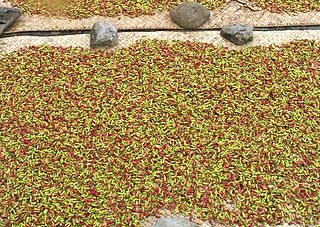 The Tanimbars are at almost the south-eastern extremity of the 5000
km long Indonesian Archipelago, only 150 km from the coast of
Australia. Unlike most of the country, the population is
predominantly Christian. At the Harapan Indah, the only hotel in
town, we arranged to stay at the owners' farm 21 km along the
island's only road, so that we had ready access to the native
forest. By the time we reached the farm, after supplies had been
purchased, including a crate of beer, it was raining – the first
time for 4 months so it was said. We had come here to try to see
the 20 or more special birds endemic to these parts, a surprisingly
high number for such a relatively small area. When the rain
stopped, we set forth, amongst much bird activity, but were
disappointed to find the extensive forest reported to be present by
the last person we knew to have visited, some 10 years ago, had
gone and only patches of logged forest remained.
The Tanimbars are at almost the south-eastern extremity of the 5000
km long Indonesian Archipelago, only 150 km from the coast of
Australia. Unlike most of the country, the population is
predominantly Christian. At the Harapan Indah, the only hotel in
town, we arranged to stay at the owners' farm 21 km along the
island's only road, so that we had ready access to the native
forest. By the time we reached the farm, after supplies had been
purchased, including a crate of beer, it was raining – the first
time for 4 months so it was said. We had come here to try to see
the 20 or more special birds endemic to these parts, a surprisingly
high number for such a relatively small area. When the rain
stopped, we set forth, amongst much bird activity, but were
disappointed to find the extensive forest reported to be present by
the last person we knew to have visited, some 10 years ago, had
gone and only patches of logged forest remained. 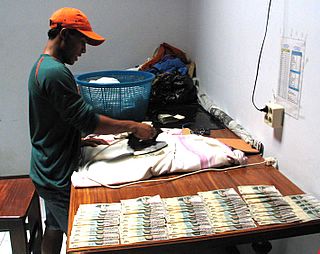 However, over the
next 4 days we saw all the specialities, including 2 parrots, 2
thrushes and 5 flycatchers, apart from the Tanimbar Scrubfowl,
sadly scarce or elusive due to hunting, and the Pied Bronze Cuckoo.
Strangely, I had recorded the song of the cuckoo on the first
afternoon, but never heard it again. According to the book, it
parasitizes the endemic Rufous sided Gerygone, but the only bird to
react to the playback of its song, on several occasions, was the
Wallacean Whistler – indicating that this species is the main host
for the cuckoo's eggs.
However, over the
next 4 days we saw all the specialities, including 2 parrots, 2
thrushes and 5 flycatchers, apart from the Tanimbar Scrubfowl,
sadly scarce or elusive due to hunting, and the Pied Bronze Cuckoo.
Strangely, I had recorded the song of the cuckoo on the first
afternoon, but never heard it again. According to the book, it
parasitizes the endemic Rufous sided Gerygone, but the only bird to
react to the playback of its song, on several occasions, was the
Wallacean Whistler – indicating that this species is the main host
for the cuckoo's eggs.
 On the last afternoon, we visited the old village of Turgham. We
started at the mayor's house, where a meeting of the village
elders was in progress. After mutual greetings, we signed the
visitors book, noting that all previous visitors of the last 2-3
years looked to be either Indonesians or Australians, the latter
associated with the annual Darwin to Saumlaki boat race apparently.
At a wood-carver's house we bought a number of carvings from
the selection on offer by several local artists – good quality and
value. We were invited to drink a glass of Soli, local spirit
distilled from palm wine- highly alcoholic and surprisingly smooth.
Returning to the Harapan Indah in Saumlaki, we enjoyed the
air-conditioning, until ended by a power cut, and were amused to
observe the staff ironing banknotes flat, perhaps to facilitate
storage as even the smallest item can require a large number of
notes, the exchange rate being 16, 000 Rupiah to the pound. The
trappings of civilisation are a bit thin on the ground here: no
mobile phone cover, internet access or shopping malls. Predictably,
our flight was delayed by late arrival of the plane but this gave
us chance to study the profusion of Oriental Plovers and Little
Curlews on the runway – two species rarely encountered away from
their wintering grounds in northern Australia. It was a shame we
could not fly to Kai but we all agreed this last minute extension
to our eastern Indonesia trip had been a highly rewarding and
pleasant experience.
On the last afternoon, we visited the old village of Turgham. We
started at the mayor's house, where a meeting of the village
elders was in progress. After mutual greetings, we signed the
visitors book, noting that all previous visitors of the last 2-3
years looked to be either Indonesians or Australians, the latter
associated with the annual Darwin to Saumlaki boat race apparently.
At a wood-carver's house we bought a number of carvings from
the selection on offer by several local artists – good quality and
value. We were invited to drink a glass of Soli, local spirit
distilled from palm wine- highly alcoholic and surprisingly smooth.
Returning to the Harapan Indah in Saumlaki, we enjoyed the
air-conditioning, until ended by a power cut, and were amused to
observe the staff ironing banknotes flat, perhaps to facilitate
storage as even the smallest item can require a large number of
notes, the exchange rate being 16, 000 Rupiah to the pound. The
trappings of civilisation are a bit thin on the ground here: no
mobile phone cover, internet access or shopping malls. Predictably,
our flight was delayed by late arrival of the plane but this gave
us chance to study the profusion of Oriental Plovers and Little
Curlews on the runway – two species rarely encountered away from
their wintering grounds in northern Australia. It was a shame we
could not fly to Kai but we all agreed this last minute extension
to our eastern Indonesia trip had been a highly rewarding and
pleasant experience.
World Photo Day 1st June 2005
Here is a marvellous opportunity to photograph our lives and submit to World Photo Day.
The World PhotoDay 2005 project is an exploration into the everyday lives of people on a global scale. The diversity of this planet we inhabit is grand beyond belief. While you are having breakfast reading the paper, what do you think the rest of the world is doing? You will find out what happens on just one single day in the lives of people worldwide. No one is excluded from participating – you can be a professional, an amateur, someone who has a 35mm disposable, or whatever. The intent here is to show us, humankind, as we are. If you are using the latest digital SLR, or a disposable camera, great! Submissions will not be accepted until June 1, 2005 @ 00:01 hours GMT.
All photos must be taken on this single day – 1st June 2005, please! Try to depict life on just one day in the world as seen through your eyes, the photographer. Pre-registration is required to participate. Submissions are limited to 1 (one) photo per person. This is due only to the organiser's limitations in handling multiple photos per individual.
Take a look at: http://www.worldphotoday.org
Flag Quiz
Which countries are represented by these flags? For the answers, see at the end of the eNews.

Have You Got an Original Travel Tale?
Another TV production company, one who made the film Touching the Void is looking for an original tale from a different terrain i.e. – not a mountaineering story. If you think you could help, please contact Claire on claire.forsyth@darlowsmithson.com
Hiking the Appalachian Trail from New York City By Susan Velasquez
Luckily there are many ways to go hiking over the weekend and most of them are accessible by train or bus from New York City. Possibly the most famous trail of all is the Appalachian Trail, which starts in Georgia and goes all the way up to Maine. But for day trips or a hike of a few hours, you can take a bus or train from the city.
The most popular way to get there is by train from Grand Central Station. There are two early morning trains that run on weekends only. The train will drop you off at a tiny station (Appalachian Trail station) that runs right through the trail. The walks North or South along the trail are both picturesque, but the South walk is possibly less strenuous and better for beginners. You first walk along planks through a swampy area. Then you enter a lovely forest area. Suddenly the forest ends and you are out in the open, in the middle of fields and farms. Walk along the sides of farms and you can wave hello to the cows and horses that inhabit them. The backdrop to these fields and farms are gorgeous mountains, which are especially picturesque in the autumn months when the colours of leaves change. Bring a camera as there are some lovely photo opportunities. Then cross the road and enter another forest area; but this one feels different to the last. You will see new types of plants and trees in this area. So the walk is a real feast for the senses and the trail keeps taking you through different terrain and landscapes. You can hike for either 3 hours or 5 hours before you have to get back to the tiny station for your return train to the city.
It is also possible to take the Metro North train to Cold Spring train station. There are many trails within walking distance of the train station but for the Appalachian Trail you have to go into the sports store near the station. It is one of the first stores you will see along Main Street when you leave the end of the platform. For a small fee, they provide shuttle service to the trail. It would be wise to book ahead but on weekends they have regular service for the many hikers that enjoy the area, especially in the warmer months. You are dropped off at the trail head and they pick you up at a specified time later in the day. The trains back to New York City run every hour.
Another route would be to take the bus to the Appalachian trail from Port Authority Bus Terminal (there is a bus that goes to Bear Mountain as well as to the Military Academy across the Hudson River). It is a 2-3 hour ride, but the bus leaves you right at the trail and then you have a few hours to hike before getting the bus back to New York. There are toilet facilities in Bear Mountain State Park, and also places to buy drinks or snacks. The Appalachian Trail runs directly through the park and there are also several other enjoyable trails in the area, including one around a large lake that is very picturesque.
Still another possibility is to take a bus from Port Authority to the Delaware Water Gap in Pennsylvania. The Gap is right on the border of Pennsylvania and New Jersey and the Appalachian Trail runs right through the town there too. It is a 2-3 hour ride and a short walk from the bus station through the middle of town to the trail itself. The town has a few shops and places to eat, and even trolley tours of the area (during the warm months only). Again, you can spend several hours exploring the area and hiking the trail before returning to New York City.
There is little excuse not to hike the famous trail and enjoy all the benefits of a walk in the woods. A tranquil break from the hustle and bustle of the Big Apple is always welcome.
Globetrotters Travel Award
A member of Globetrotters Club? Interested in a £1,000 travel award?
Know someone who is? We have £1,000 to award each year for five years for the best submitted independent travel plan. Interested?
Then see our legacy page on our Website, where you can apply with your plans for a totally independent travel trip and we'll take a look at it. Get those plans in!!
Sun at Midnight
Sun at Midnight is a book by Rosie Thomas, due to be published in July 2005 by Harper Collins. The book is based around her stay on a research station in Antarctica. We wanted to include a brief account of Rosie and her forthcoming book to give inspiration to other aspiring authors. It is only in recent years following a divorce and her children finding their own way in the world has Rosie had her life to herself. Travelling across deserts, partaking in international car rallies and scaling high mountains are so much easier without the family baggage. Once she was established as a successful writer and her children were grown, she discovered a love of travelling and mountaineering. She has climbed in the Alps and the Himalayas, competed in the Peking to Paris car rally, and spent time on a tiny Bulgarian research station in Antarctica to research this novel. Woman and Home magazine said this of Praise for SUN AT MIDNIGHT: 'This is an epic love story set against breathtaking descriptions of Antarctic waste.' Look out for it!
Link: http://www.harpercollins.com/
